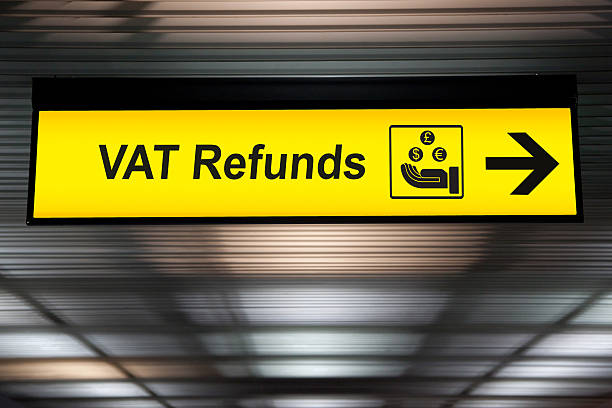In the complex world of taxation and business compliance, obtaining a VAT Certificate is a crucial step for businesses operating in many countries. The process can be intricate and time-consuming, but with the right knowledge and guidance, it can be streamlined to ensure your business is compliant with tax regulations.
In this comprehensive guide, we will walk you through the steps to obtain a VAT Registration UAE certificate through Emara Tax, simplifying what might seem like a daunting task.
Understanding VAT and Its Significance
Before delving into the specifics of obtaining a VAT Certificate Online through Emara Tax, it’s essential to grasp the concept of VAT itself. VAT is a consumption tax levied on the value added to goods and services at each stage of production or distribution. It is a critical source of revenue for governments worldwide and is designed to be borne by the final consumer.
Why is a VAT Certificate Necessary?
A VAT certificate serves as proof that your business has VAT Registration. It allows your business to engage in taxable activities, collect VAT from customers, and claim input VAT on eligible expenses. Without this certificate, your business may face penalties and legal complications.
Emara Tax Advantage
Emara Tax is a renowned platform that specializes in assisting businesses with their tax-related matters. They offer a user-friendly interface and a streamlined process for obtaining a VAT certificate, making it an excellent choice for businesses looking for efficiency and reliability.
Step 1: Registration on Emara Tax
To begin your journey VAT Certificate Registration, visit the Emara Tax website and create an account. This step involves providing essential business information, including your company’s name, address, and contact details.
Step 2: Verification and Documentation
Once your account is created, Emara Tax will initiate a verification process. This typically involves submitting necessary documents, such as your business license, trade register, and financial records. Ensure that all documents are accurate and up-to-date to expedite this process.
Step 3: Application Submission
After successful verification, you can proceed with the VAT certificate application. Emara Tax provides a user-friendly form where you’ll need to input specific details about your business, including your tax identification number and the type of goods or services you provide.
Step 4: Fee Payment
Obtaining a VAT certificate may involve certain fees, depending on your jurisdiction. Emara Tax will provide clear information regarding the applicable fees and payment methods. Ensure timely payment to avoid delays in your application.
Step 5: Application Review
Emara Tax’s team of experts will thoroughly review your application to ensure accuracy and compliance with local regulations. This step is crucial to prevent any discrepancies that may lead to delays or rejections.
Step 6: Certificate Issuance
Once your application is approved, Emara Tax will issue your VAT certificate electronically. It is essential to keep a copy of this certificate for your records and display it as required by tax authorities.
Compliance and Ongoing Responsibilities
Obtaining a VAT certificate is a significant milestone, but it comes with ongoing responsibilities. Your business must:
Collect VAT: When selling goods or services subject to VAT, you must charge the appropriate VAT rate to your customers.
File VAT Returns: Regularly submit VAT returns to report the VAT collected and paid to tax authorities.
Maintain Records: Keep accurate records of all VAT transactions, including invoices, receipts, and expenses.
Comply with Audits: Be prepared for periodic VAT audits by tax authorities to ensure compliance.
______________________________________________
How to Apply for VAT Penalty Waiver in UAE?
If you’re a business owner or an individual in the UAE who has found themselves in a situation where you’ve incurred VAT (Value Added Tax) penalties, then you can apply for a VAT Penalty Waiver. VAT regulations can be complex, and unintentional errors can lead to financial penalties.
In this comprehensive guide, we will walk you through the steps to help you understand how to apply for a VAT penalty waiver effectively.
Understanding VAT Penalties
Before we delve into the process of applying for a VAT penalty waiver, it’s essential to grasp the basics of VAT penalties in the UAE. VAT penalties are imposed on businesses or individuals who fail to comply with the VAT regulations set forth by the UAE FTA VAT Registration. These penalties can be levied for various reasons, including:
1.Late Submission of VAT Returns
One of the common reasons for VAT Penalties is the late submission of VAT returns. Businesses and individuals are required to file their VAT returns on time, usually within 28 days from the end of the tax period. Failure to meet this deadline can result in penalties.
2. Underpayment of VAT
If you miscalculate your VAT liability or underreport your sales, leading to a lower VAT payment than required, you may face penalties when the FTA discovers the discrepancy
3. Non-Registration for VAT
Entities that meet the VAT Registration threshold are obligated to register for VAT. Failure to do so can result in penalties.
4. Failure to Maintain Adequate Records
Proper record-keeping is crucial for VAT compliance. If you fail to maintain accurate and complete records as per the FTA’s requirements, you could be subject to penalties.
Eligibility for VAT Penalty Waiver
Now that we’ve covered the common reasons for VAT penalties, let’s explore the eligibility criteria to Waive a VAT Penalty in the UAE. Keep in mind that not all penalties are eligible for waiver. You may be eligible for a waiver if:
1.Genuine Mistake
If the reason for your VAT penalty is a genuine mistake, such as a calculation error or a misunderstanding of the VAT regulations, you may have a valid case for a waiver.
2.Prompt Rectification
The FTA is more likely to consider a waiver if you promptly rectify the error upon discovering it. Timely corrective actions demonstrate your commitment to compliance.
3.First-Time Offender
If this is your first VAT Penalty, and you have a history of compliance, the FTA may be more lenient in considering your waiver request.
4.Cooperation with FTA
Cooperating fully with the FTA during their investigation and providing all necessary information can work in your favor when seeking a waiver.
Steps to Apply for VAT Penalty Waiver
Now that you understand the eligibility criteria, let’s walk through the steps to apply for a VAT penalty waiver in the UAE:
Step 1: Gather Documentation
Collect all relevant documents, including the notice of the penalty, evidence of the mistake, and any supporting documents that demonstrate your commitment to compliance.
Step 2: Write a Formal Letter
Draft a formal letter addressed to the FTA explaining the circumstances that led to the penalty. Be concise, honest, and clear in your explanation.
Step 3: Attach Supporting Documents
Include copies of all the documents you gathered in Step 1. Ensure that these documents support your case for a waiver.
Step 4: Submit Your Request
Submit your formal letter and supporting documents to the FTA. You can typically do this through their online portal or by visiting their office in person.
Step 5: Follow Up
After submitting your request, it’s essential to follow up with the FTA to check the status of your application. Be prepared to provide any additional information they may request.




